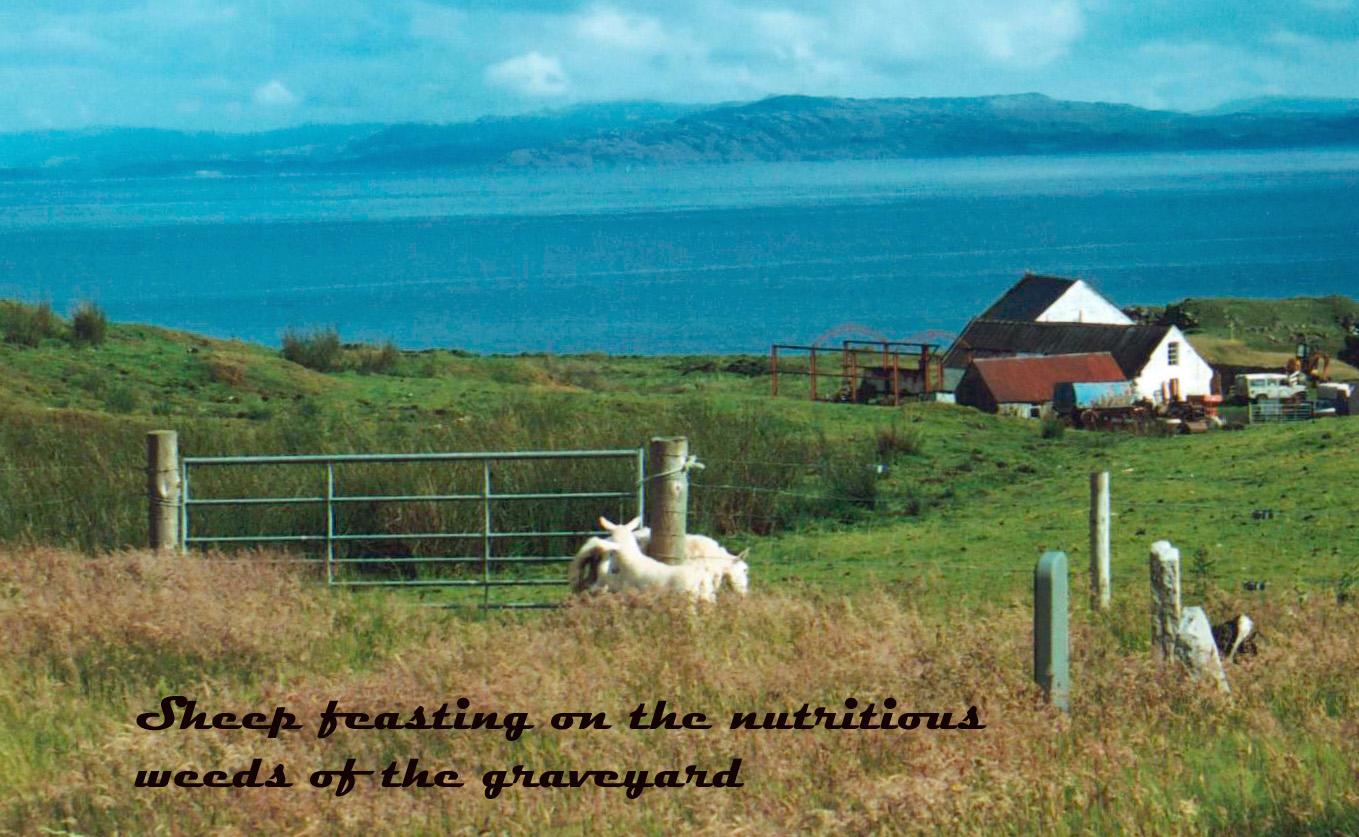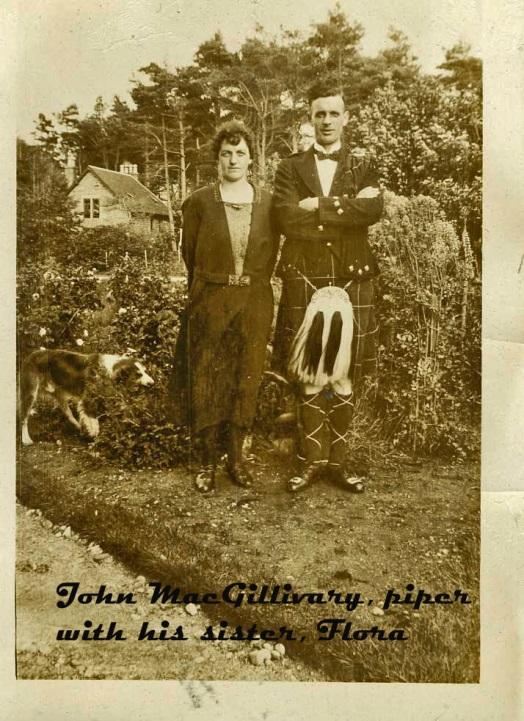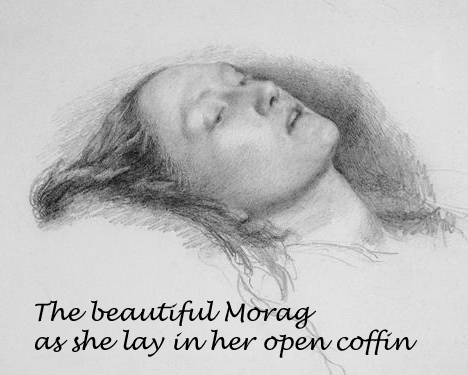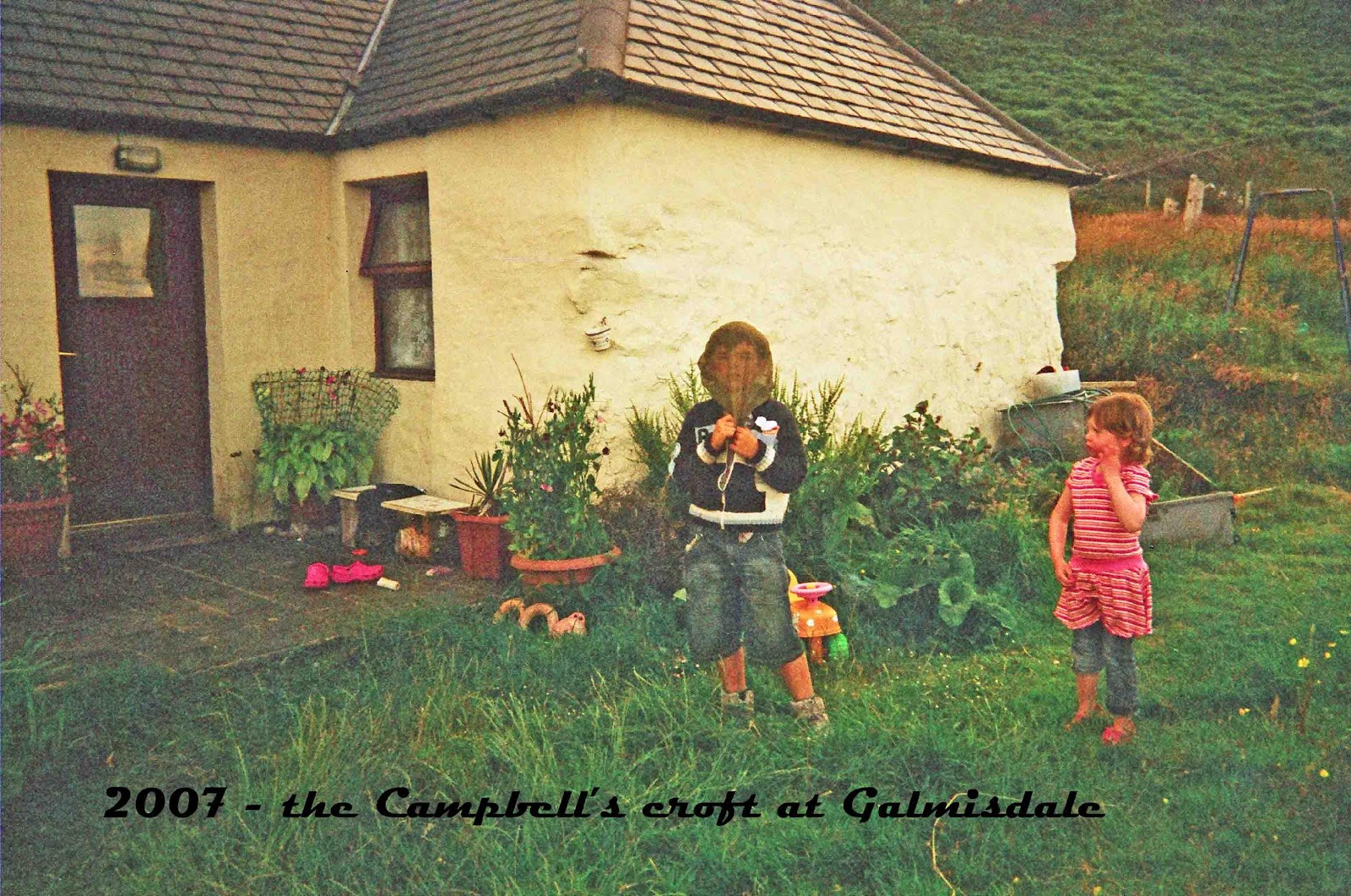I visited Eigg on two occasions around 2006-7. I stayed both times at Kildonnan Farm, as it is also a guesthouse. It was managed by my great uncle John MacKinnon who was grieve of the farm until he retired in 1935. My mother also stayed at the farm in the early 1930s in the summer holidays, when she was a young girl in her early teens. She was 14 years old in 1935 when John MacKinnon retired.
The Kildonnan Farm guesthouse makes a good base from which to carry out explorations. It is situated near the church and graveyard. It was also not too far from the pier and the cafe located at the south of the island.
The delightful Marie Carr who runs the guesthouse made me and my son feel very welcome. She provided excellent food made on an impressive kitchen range, which she informed me had not come at a cheap price. My only regret was that I wished I could have stayed there longer!
After eating breakfast, it didn’t take long before me and my 8 year old son Alan discovered the old roofless church and graveyard nearby. The church was deserted and overgrown with weeds, as was the graveyard. The fence around the graveyard was also broken, so the farmer’s sheep wandered in and out at will.
Ironically, Donnan and his monks may have ‘disturbed’ the grazing of Queen Moidart’s sheep those hundreds of years ago, but now they are back again. The sheep had been feasting on the overgrown grass and weeds of the graveyard and church! The grass and weeds in the church and the graveyard are no doubt very nutritious; it has been enriched by the bones and flesh of those hundreds buried there, including the bones of Donnan who ‘disturbed’ Queen Moidart’s sheep.

Worms, Pigs, Sheep, and Cannibalism
In this context, I can’t resist quoting James Wilson of “The Scotsman” mentioned elsewhere in this book. He describes the natives of Eigg as ‘cannibals’ as the pigs of the island feasted on the bones in the ‘Massacre Cave’. He comments that “as the people eat the pigs, and the pigs the people’s predecessors, it follows logically that the present natives are a race of cannibals of the very worst description.”
One might also say that as the sheep eat the plants in the Kildonnan graveyard that are nourished by the corpses of the hundreds that are buried there, and the people eat the sheep; thus, the people are also ‘eating their ancestors’. In modern terms this is not called ‘cannibalism’, but ‘sustainable farming’. I seem to remember a scene in one of Shakespeare’s plays, but I forget exactly which one. The worms eat the corpses, the birds eat the worms, and we eat the birds. In other words, this is an idea that runs throughout literary and historical texts.
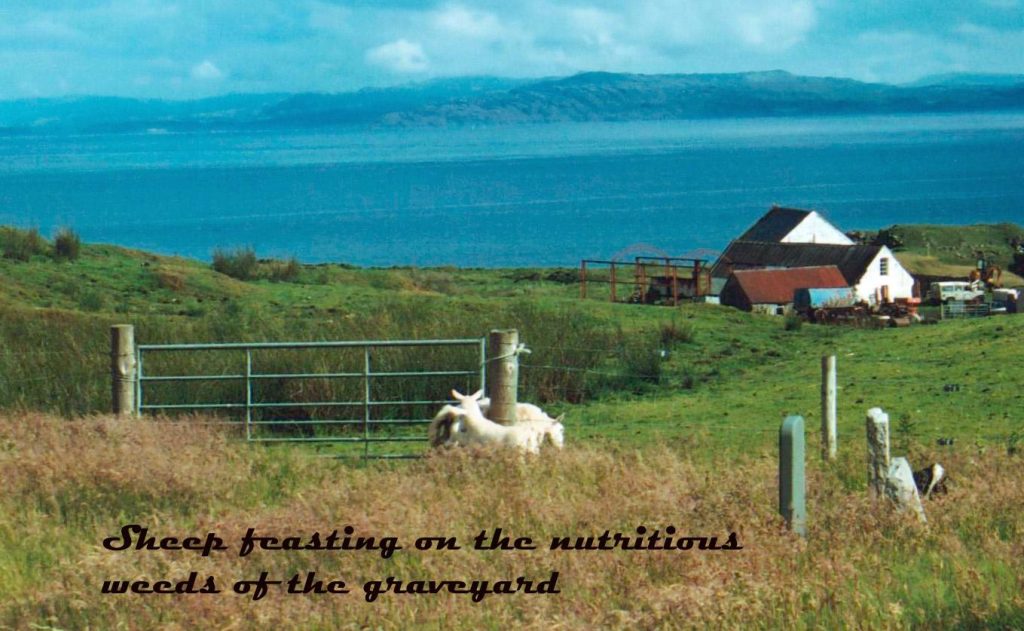
Where are my Ancestors Buried?
In fact, many of my ancestors are buried at Kildonnan. But it is impossible to see where, as some were buried without stones, or the stones are overgrown. There are only a few stones that are readable – and these often mark the graves of the ‘famous’ Eigg people. The ‘ordinary’ Eigg people are mainly buried there ‘nameless’. However, my great uncle Donald Campbell’s family have a gravestone there. The family of Flora Campbell (my great aunt) and her husband, John MacKinnon, and their son Lachlan are also there. But I will report on this later in the book.
